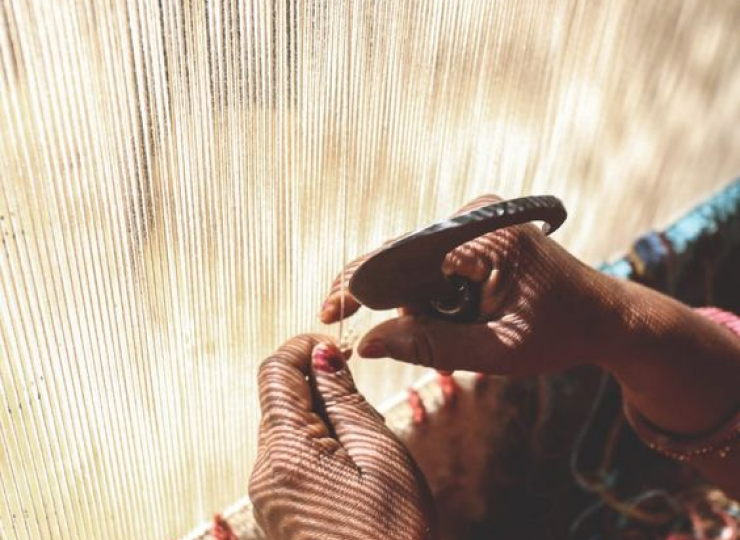Silk sarees, an epitome of elegance and tradition in Indian fashion, have always been cherished for their timeless appeal. However, as the world moves towards a more sustainable future, the silk industry is also undergoing a transformation. In this blog, we delve into the journey of silk sarees towards sustainability, exploring the challenges and innovations that are shaping this beloved garment's eco-friendly evolution.
The environmental footprint of silk production
Silk production, traditionally known for its luxury, has an environmental impact that cannot be overlooked. The process involves sericulture, where silkworms are reared on mulberry leaves and the extraction of silk threads from cocoons. This process is resource-intensive, requiring large amounts of water and energy. Additionally, the use of chemicals in dyeing and treating silk fabrics adds to the environmental burden.
The shift towards oganic silk
In response to these challenges, the silk industry is witnessing a shift towards organic silk production. Organic silk, also known as Ahimsa silk or peace silk, is produced without harming the silkworms, allowing them to naturally complete their life cycle. This method not only ensures cruelty-free silk but also reduces the environmental impact of silk production. Organic silk is gaining popularity among eco-conscious consumers who seek ethical and sustainable fashion choices.
Innovations in eco-friendly dyeing techniques
The traditional dyeing process for silk sarees often involves synthetic dyes that can be harmful to the environment. To address this, there has been a rise in eco-friendly dyeing techniques that use natural dyes derived from plants, minerals, and other sustainable sources. These natural dyes are biodegradable and free from toxic chemicals, making them a safer alternative for both the environment and the artisans involved in the dyeing process.
The role of upcycling in silk saree sustainability
Upcycling is a creative solution to reduce waste in the fashion industry. Silk sarees that are no longer in use can be transformed into new garments, accessories, or home decor items. This not only extends the life of the silk fabric but also promotes a circular economy in fashion, where materials are reused and repurposed instead of being discarded.
Embracing slow fashion with silk sarees
The concept of slow fashion encourages consumers to invest in high-quality, timeless pieces that can be worn for years. Silk sarees, with their durability and classic appeal, align perfectly with the principles of slow fashion. By choosing silk sarees that are ethically produced and caring for them properly, consumers can contribute to a more sustainable fashion industry.
Conclusion
The journey of silk sarees towards sustainability is an ongoing process that requires the collective effort of producers, consumers, and policymakers. By embracing organic silk, eco-friendly dyeing techniques, upcycling, and slow fashion, we can ensure that the legacy of silk sarees continues in harmony with the environment. As we move forward, it is crucial to support sustainable practices in the silk industry to preserve the beauty and heritage of silk sarees for future generations.





